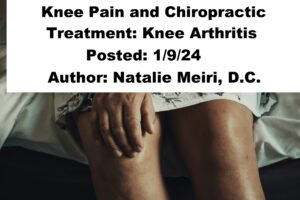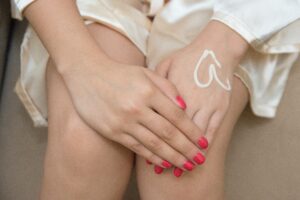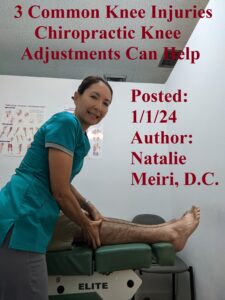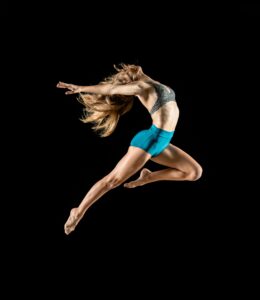
If you have knee pain from an anterior cruciate ligament injury, Chiropractic can provide relief! This post is about Knee Pain and Chiropractic Treatment: A.C.L. Injury.
Acute Phase of the Anterior Cruciate Ligament (ACL) Injury
If you are in the acute phase, you may have sudden knee pain after a “contact injury”. Your knee may get hit very hard on the side. In addition, it may get hit while in a hyperextension (knee bent backwards) position. Furthermore, you may have heard a “pop” during the injury. Next, your joint will swell and you won’t be able to weight bear.
Chronic Phase of the Anterior Cruciate Ligament (ACL) Injury
If you are in the chronic phase, you may have had the above happen in the past. Of course, it may have resolved gradually after some swelling and pain. Finally, you may feel more of an instability than pain in your knee. Moreover, you may not even remember what happened. So this would be a noncontact/ nontraumatic ACL injury. And this often occurs when an athlete slows down, pivots while running, and lands from a jump. Typically, these movements are common in sports, especially in soccer, basketball, and football.
Anatomy: Femur (thigh bone), Tibia (shin bone), Fibula (thin, outer long bone of the leg), and the Patella (kneecap)
There are three “articulations” (joint or juncture between bones or cartilages) at the knee: the tibiofemoral, patellofemoral, and tibiofibular articulations. However, only the tibiofemoral and patellofemoral articulations participate in knee joint activity. The tibiofibular articulation/joint does not actually contribute to the actions of the knee. Instead, it is part of the ankle joint complex moving the ankle in all the various ranges of motion. However, dysfunctional processes in the proximal tibiofibular articulation/joint can affect other knee functions and can be a source of knee pain.
So the tibiofemoral and tibiofibular are synovial articulations. These are freely movable joints. And the bony surfaces are coated with hyaline cartilage. It is unified by a fibrous articular capsule. However, the third articulation, patellofemoral, is a functional joint (non-synovial joint).
More Anatomy of the Knee: About the ACL
First, the knee is supported by the joint capsule, its cartilage “thickenings”, and the collateral-ligamentous system. And the collateral ligaments (band of tissue that connects a bone to another bone) are located on either side of your knee outside your knee joint.
Second, internally the knee is stabilized and the control of rotation is provided by the meniscocruciate system. There are two C-shaped cartilage like structures, each one called a meniscus. The menisci aid in shock absorption and help govern rotational movement at the knee.
Third, the cruciates, capsule, and collateral ligaments connect the femur to the tibia. The cruciates are a pair of ligaments that cross each other in the knee, connecting the tibia and the femur. The Anterior Cruciate Ligament (ACL) is smaller (size of the little finger) than the Posterior Cruciate Ligament. It’s usually more readily injured than the Posterior Cruciate Ligament (PCL) (size of the thumb). The cruciates allow tension to develop through most ranges of motion.

Complications and Causes of Knee Pain from the ACL Injury
An anterior cruciate ligament injury is the over-stretching or tearing of the anterior cruciate ligament (ACL) in the knee.
As mentioned previously, ACL damage can be from a noncontact injury or a sudden traumatic contact event. Usually, excessive contraction of the quadriceps muscle with insufficient hamstrings co-contraction occurs with sudden stopping or cutting manuevers. Also, contact injury with a rotary component is more likely to damage the ACL and other structures such as the menisci or MCL (medial collateral ligament).
When the ACL tears, it usually occurs in the mid substance of the ligament. And because of the closeness of the vasculature, blood vessel rupture often occurs. Lastly, this causes quickly developing joint swelling that is both tense and painful.
ACL injury Grade 1-3
Sprain is grade 1– microscopic tears that stretch the ligament.
Partial ACL tear is grade 2– stretched and partially torn.
Complete ACL tear or an avulsion is grade 3- the Tibial spine avulsion ACL injury occurs in teens. The ACL hasn’t torn, but the attachment of the ligament to the tibia has pulled off partially or entirely. With a complete tear you may need surgery. However, you should always try conservative therapy/treatments such as chiropractic first.
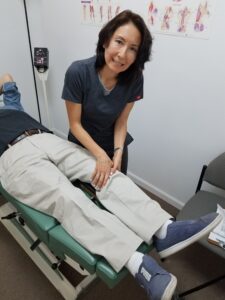
Evaluation, Tests and Management
After examining your knee, your doctor may order imaging such as an x-ray or/and M.R.I. Grade 1 ACL injuries may not require bracing. However, second to third grade tears (without involvement of the meniscus) may require a month of restricted bracing.
Knee Pain and Chiropractic Treatment: A.C.L. Injury Treatment at Meiri Chiropractic
First, the knee and associated spine and extremity (limb) joints are adjusted.
Second, manipulation of muscle contractures with soft tissue techniques is utilized. Some Techniques include gentle PNF/PIR (e.g. post isometric relaxation) and/or myofascial release techniques.
Finally, Therapeutic exercises for rehabilitation/ strengthening are prescribed.
Getting regular chiropractic treatment at a chiropractic center in West Palm Beach can help naturally relieve the pain and dysfunction of the knee. Chiropractic is a holistic and natural way to not only treat existing conditions, but to keep your body in its best working condition.
Contact Meiri Chiropractic today at 561-253-8984 to make an appointment on Knee Pain and Chiropractic Treatment: A.C.L. Injury or/and other ailments.
